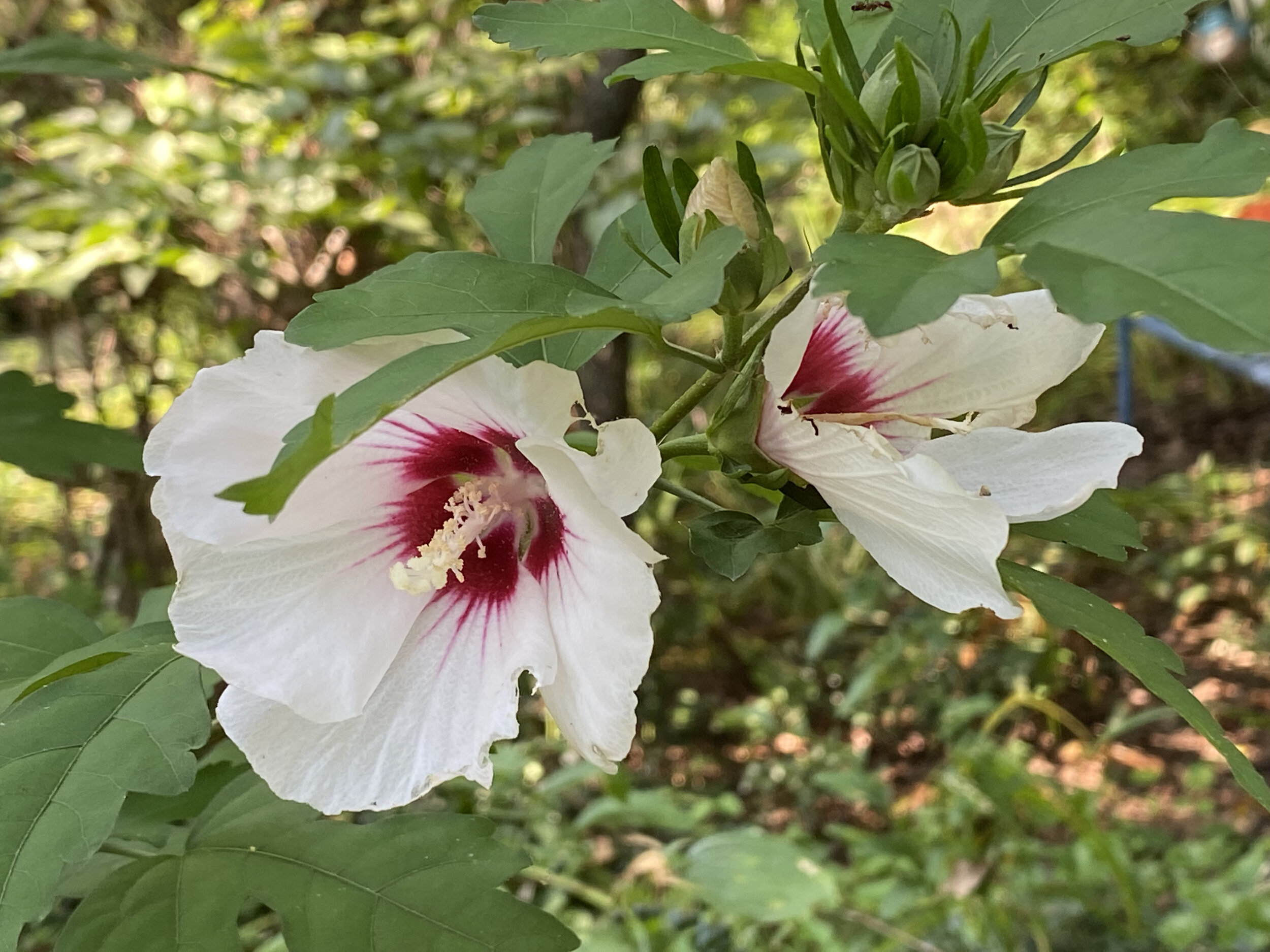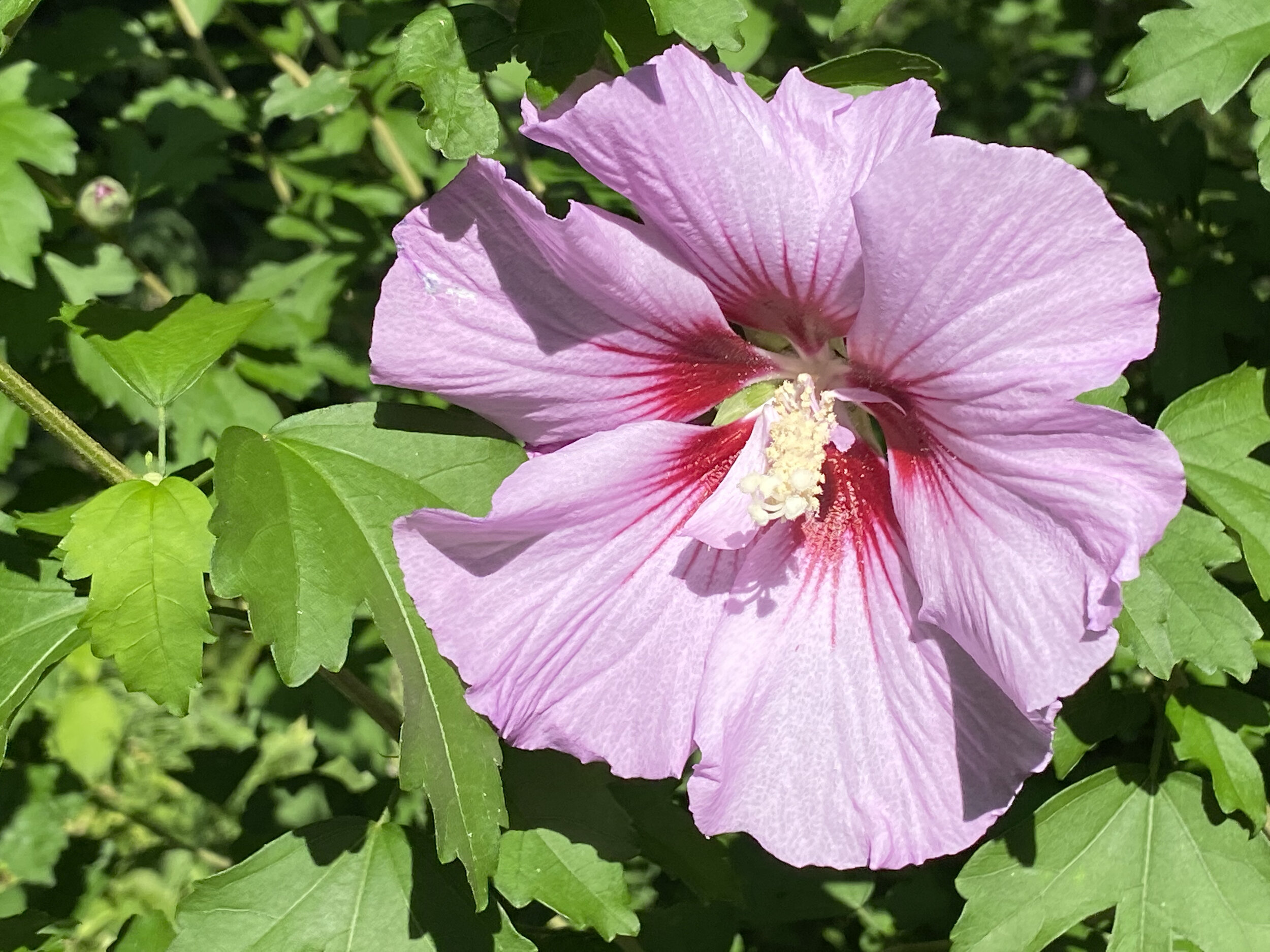Rose Mallow
/Missouri’s native rose mallow, or native hibiscus, is a lovely white with a red throat. (Photo by Charlotte Ekker Wiggins)
Rose Mallow
Rose mallow (Hibiscus moscheutos) is a large, fast-growing, cold hardy relative of Rose of Sharon, (Hibiscus syriacus), native to southeastern US swamps and wetlands. It has 6-8 inch flowers that entice bees and butterflies and are an asset to perennial garden borders.
This species of mallow, also known as swamp hibiscus, has become increasingly popular in recent years as a native alternative to tropical hibiscus in warmer growing zones. Though it is found in wet soils in nature, it grows quite well in ordinary garden soil as long as it has regular irrigation. I have some planted towards the bottom of a flower bed on an incline so it collects moisture to keep the roots hydrated.
You can tell there’s a family connection between rose mallow and the once-popular perennial “Rose of Sharons” now found in old homesteads. Rose Mallow tends to be white and red; Rose of Sharon, considered a woody shrub, has smaller pink, lavender and purple blossoms.
Because of their easy growth habit, there are many new rose mallow and rose of sharon cultivars being offered.
The other major difference with rose mallow is that the leaves are bigger, up to eight inches long. Depending on the soil they are growing in, they can have a deep green color. The leaves are also serrated making them just as interesting and showy as the flowers.
According to Don Kurz in “Ozark Wildflowers,” Rose Mallow is one of the largest wildflowers in the Ozarks. Their seeds are also a favorite food source for ducks and bobwhite quail.
Rose mallow plants grow as a single branched stalk that emerges from the ground in late spring where I live. In the fall, they tend to die back to the ground so it’s helpful to mark their location if you don’t want to inadvertently dig and plant over them.
Another perennial mallow is the hardy hibiscus called Rose of Sharon. (Photo by Charlotte Ekker Wiggins)
Their cousins, Rose of Sharon, die back but leave their stems for regrowth the following years.
i added Rose of Sharon starts to my garden years ago, even before I had bees, because they flower mid-summer undisturbed by scorching heat. To make sure I can enjoy their lovely blooms, I’ve trimmed many of the plants into a tree shape, leaving the top canopy full of flowers.
To make sure young trunks grow straight, I tie them to rebar stakes for a year or two until their trunks are strong enough to stand on their own. This little corner Rose of Sharon has been growing in that spot for 5 years and just started blooming last year.
I trim most of mine hardy hibiscus into tree forms. (Photo by Charlotte Ekker Wiggins)
Rose mallow, and Rose of Sharon, are excellent pollinator plants because their pollen is easily accessible. They also start blooming when other plants are ending their blooming cycle, giving pollinators a food source.
The top of another tree form hardy hibiscus entices butterflies and bees. (Photo by Charlotte Ekker Wiggins)
This is one of the older Rose of Sharon trees growing in the front garden now covered in blooms, bee and butterflies. Great combination!















